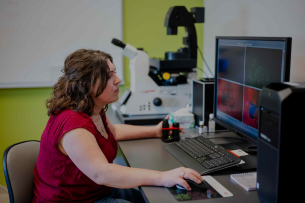Catalyzing the next breakthrough
We pioneer computational solutions that transform data into answers
Research in the Patti Lab
Our work is highly interdisciplinary, spanning three complementary areas: cancer biology, technology development, and computational biology. Team members have diverse scientific backgrounds and interests but have synergistic goals that promote collaborative activities within the group. The result is a vibrant training environment where investigators from different disciplines continuously learn from one another. Collectively, the team’s breadth of expertise provides unique scientific perspective and makes us particularly well suited to address some of the grandest challenges in biology and medicine.

Computational Biology
The Patti Lab generates large datasets from metabolomics, lipidomics, exposomics, metabolic flux, and proteomics analyses. The raw experimental output is a multidimensional array related to the physicochemical properties of the molecules being measured. Our charge is to convert these complex results into biochemical insight. For systems analyzed by multiple technologies, the results must be integrated into a set of harmonized biological conclusions. Some specific areas of interest are briefly outlined below.
Data annotations
Although mass spectrometry-based omics data have become relatively straightforward to produce, processing and interpreting the files remains a considerable challenge. In metabolomics and exposomics in particular, a major barrier is that most of the peaks in a standard experiment do not correspond to unique biological molecules. Rather, they originate from contaminants, artifacts, and signal redundancies. The Patti Lab is committed to establishing user-friendly software tools for complete annotation of datasets. We leverage insights from our annotations to improve upon data acquisition strategies, often in close collaboration with instrument manufacturers.

Flux analysis
To process isotopically labeled samples and compute metabolic fluxes, we develop additional tools. First, we assess labeling dynamics in products downstream of the tracer. We then input these results into mathematical models that we build on the basis of chemical transformations in metabolic pathway diagrams.
Multi-omics integration
Human disease is driven by a number of etiological contributions that span multiple levels of omics as a function of time. To obtain a holistic understanding of the molecular information flow and system interactions, we therefore complement mass spectrometry analyses with other profiling technologies such as genomics and affinity-based protein assays. We are invested in developing computational pipelines to integrate multi-omics datasets. In leading Washington University’s Omics Production Center, we are focused on facilitating multi-omics analysis through harmonization of statistical reporting, pathway nomenclature, controlled vocabularies, defined ontologies, among other factors.